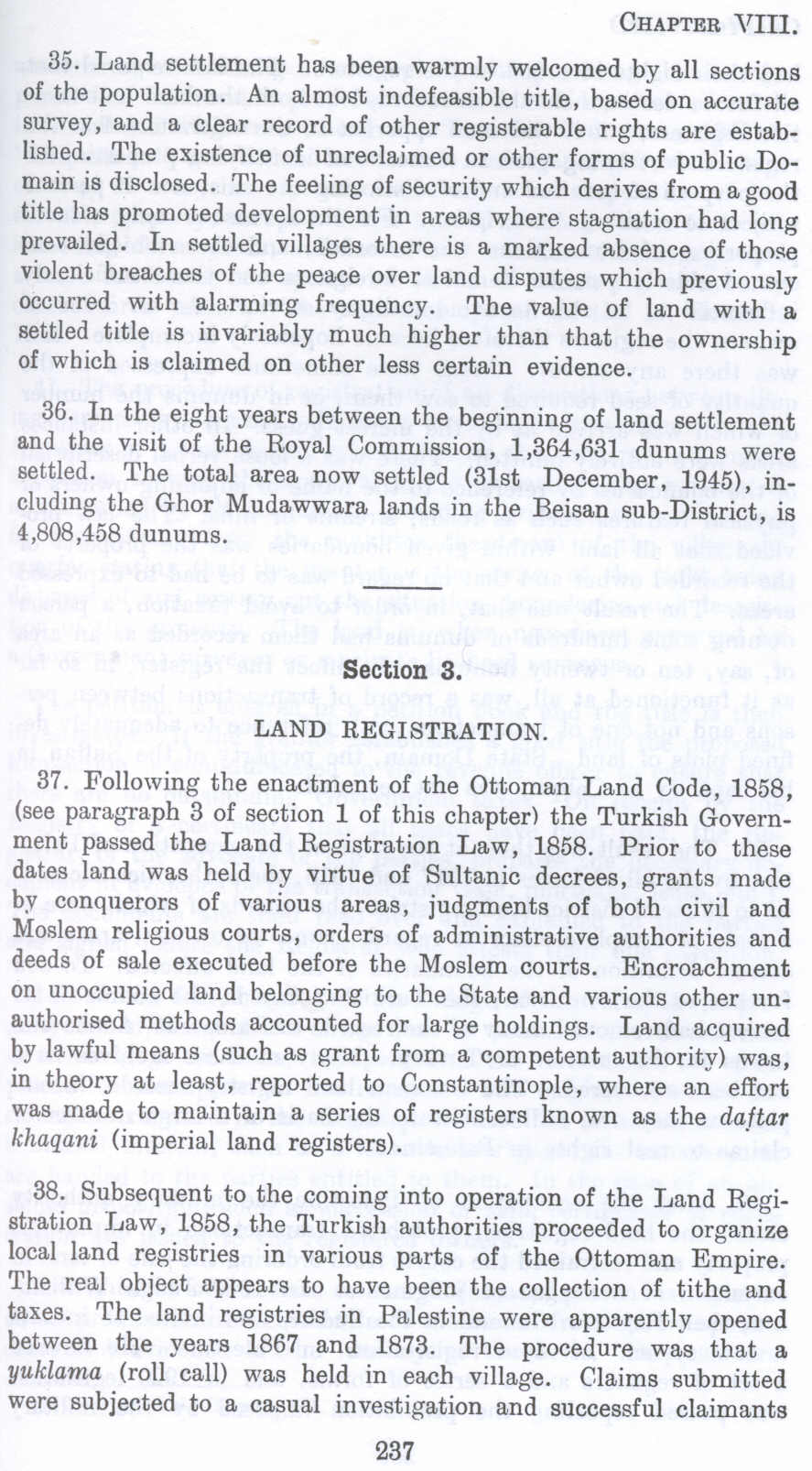| Prev | Next |  |
| Prev | Next |
| PalestineRemembered | About Us | Oral History | العربية | |
| Pictures | Zionist FAQs | Haavara | Maps | |
| Search |
| Camps |
| Districts |
| Acre |
| Baysan |
| Beersheba |
| Bethlehem |
| Gaza |
| Haifa |
| Hebron |
| Jaffa |
| Jericho |
| Jerusalem |
| Jinin |
| Nablus |
| Nazareth |
| Ramallah |
| al-Ramla |
| Safad |
| Tiberias |
| Tulkarm |
| Donate |
| Contact |
| Profile |
| Videos |
British Mandate: A Survey of Palestine: Volume I - Page 237. Chapter VIII: Land: Section 3: Land Registration |
Disclaimer
The above documents, article, interviews, movies, podcasts, or stories reflects solely the research and opinions of its authors. PalestineRemembered.com makes its best effort to validate its contents.


Post Your Comment
*It should be NOTED that your email address won't be shared, and all communications between members will be routed via the website's mail server.
35. Land settlement has been warmly welcomed by all sections of the population. An almost indefeasible title, based on accurate survey, and a clear record of other registerable rights are established. The existence of unreclaimed or other forms of public Domain is disclosed. The feeling of security which derives from a good title has promoted development in areas where stagnation had long prevailed. In settled villages there is a marked absence of those violent breaches of the peace over land disputes which previously occurred with alarming frequency. The value of land with a settled title is invariably much higher than that the ownership of which is claimed on other less certain evidence.
36. In the eight years between the beginning of land settlement and the visit of the Royal Commission, 1,364,631 dunums were settled. The total area now settled (31st December, 1945), including the Ghor Mudawwara lands in the Beisan sub-District, is 4,808,458 dunums.
Section 3.
LAND REGISTRATION.
37. Following the enactment of the Ottoman Land Code, 1858, (see paragraph 3 of section 1 of this chapter) the Turkish Government passed the Land Registration Law, 1858. Prior to these dates land was held by virtue of Sultanic decrees, grants made by conquerors of various areas, judgments of both civil and Moslem religious courts, orders of administrative authorities and deeds of sale executed before the Moslem courts. Encroachment on unoccupied land belonging to the State and various other unauthorised methods accounted for large holdings. Land acquired by lawful means (such as grant from a competent authority) was, in theory at least, reported to Constantinople, where an effort was made to maintain a series of registers known as the daftar khaqani (imperial land registers).
38. Subsequent to the coming into operation of the Land Registration Law, 1858, the Turkish authorities proceeded to organize local land registries in various parts of the Ottoman Empire. The real object appears to have been the collection of tithe and taxes. The land registries in Palestine were apparently opened between the years 1867 and 1873. The procedure was that a yuklama (roll call) was held in each village. Claims submitted were subjected to a casual investigation and successful claimants
Page 237